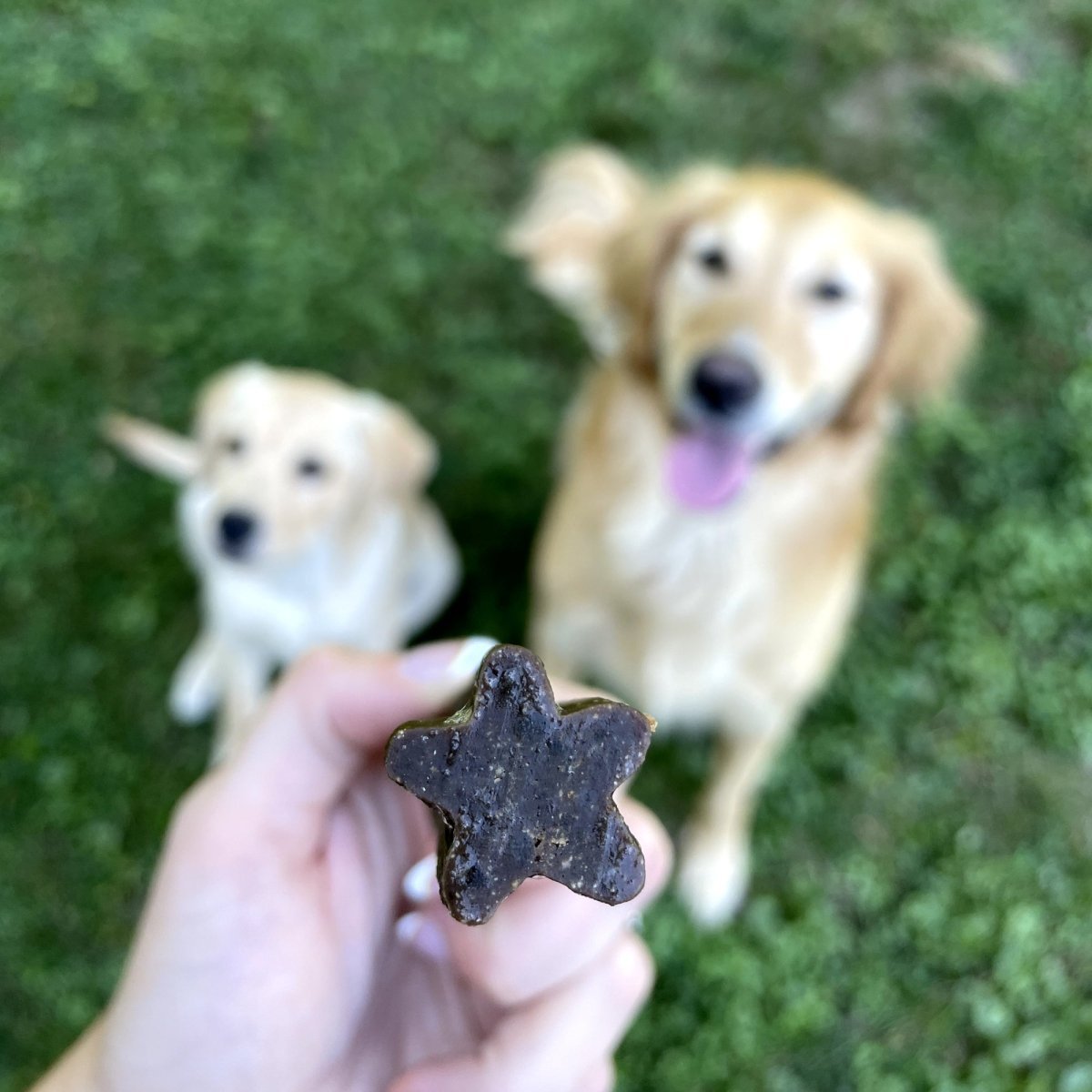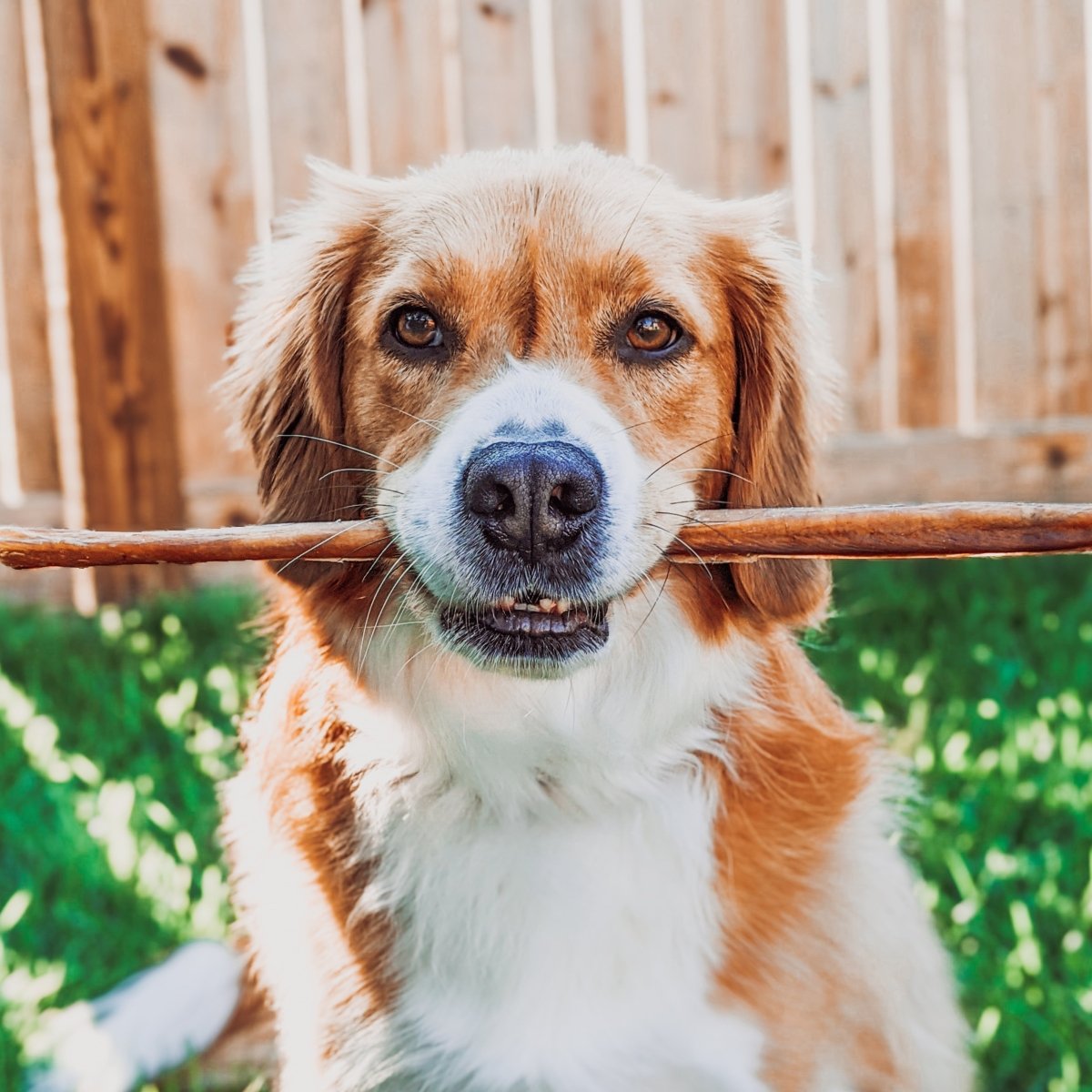

Have you noticed your puppy behaving differently? They were once the cutest puppy in the world, even after waking you up at 3 am to be let outside to go potty. But now it seems like you’ve got a little shark on your hands. They’re tearing up whatever they can get at, whether it be your shoes, books, or your hands.
But what causes this sudden chewing and nipping? Don’t worry, your dog isn’t being aggressive; they’re just teething.
Puppy teething can be frustrating, as it can lead to your furniture, hobbies, and skin being chewed up. But, as with most other puppy worries, others before you have been through it and lived to tell the tale. That means you and your puppy will get through teething with no issue. And the two of you can handle puppy teething with ease. Whether it’s treats for puppies or bite inhibition, you can work with your puppy to redirect their teething towards safer objects – all while instilling positive behaviors.
But first, you’ll need to understand what puppy teething is – what it looks like, and potential dental warning signs that may just be normal.

Just like humans, puppies eventually lose their baby teeth, with their adult teeth growing in their place. It’s a necessary part of growing up – while they might not get the fun of the tooth fairy, like you did, it’s a simple sign they’re aging out of puppyhood. Complications can still happen during this process, such as teeth not growing in correctly or inflamed gums, but the same happens in humans. It’s all part of the process!
The process where your puppy’s adult teeth start growing in is called teething. Their adult teeth begin pushing their way through the gums, out to the surface, filling the space their baby teeth left in their wake. While it’s a natural process, it’s also uncomfortable. You probably don’t remember it, but your parents might have given you a popsicle to calm your gums while your adult teeth were growing in. It was cold and comforting. It made your gums feel soothed, and the pain wasn’t as bad.
Your puppy is going through the exact same thing. They are going to have gum pain, so they turn to chewing. It seems antithetical, in practice, but it helps them soothe discomfort.
The process of teething is a gradual one, although it may appear to be sudden. Puppies start getting their baby teeth after just a week or two of age, although they won’t be fully out until a month or so after their birth. These are often referred to as “milk teeth,” as their teeth come in while they are still nursing on their mother – hence, having little need for their teeth. All 28 of their baby teeth should have fully emerged by the time they are a month and a half old.

But then the trouble begins. Your puppy will begin teething between the ages of four to five months old. You may notice a few of your puppy’s teeth around the house, either stuck in toys or just lying in the kitchen, but you may not. Puppies tend to swallow their teeth, due to them falling out while eating or chewing on something. This is completely safe and is not harmful for your puppy.
This is the time when teething begins.
After their teeth fall out, their adult teeth will begin growing in. That state of growth can be painful for a puppy. Most of all, it’s uncomfortable. To overcome that discomfort, your puppy is going to begin gnawing on various things around them. That gnawing and chewing is comforting on their gums, as it acts like both a stress reliever and a massage for their sore gums.
They’ll continue teething as their adult teeth – all 42 of them – grow in, which can last until they are one year old. That sounds like a long time to deal with puppy teething, but it’s not bad as long as you’re on top of things.
But what exactly does teething look like, besides gnawing and chewing?
You’ll notice teething once it begins – it’s not hard to identify. The most common signs you’ll see in your puppy will include excessive drooling, eating less than normal, and general crying and whining. They’re going through considerable discomfort, and they just want their pain to be relieved.
You’ll also surely see that your dog’s gums look swollen. You may even see some blood spots on their toys, which is totally normal as their adult teeth grow in. But the most obvious sign of teething, as we’ve mentioned, is the desire to chew, gnaw, and nip.
This part of teething can be difficult to deal with, especially if you’ve got a puppy who loves to nip. You may find yourself full of little bites in no time – your dog means no harm. You’ll also notice that magazines, books, socks, shoes, shirts, toys, pillows, furniture, and towels end up getting torn apart when you’re not looking. Suddenly you have to rethink how your whole house is arranged, solely to protect your possessions against their teething.
It’s all well and good to know the signs and symptoms of teething, but you should be aware of how to get through your puppy’s teething stage.

Now the question you’ve all been waiting for: How do you survive puppy teething?
It’s pretty simple, actually. Your dog is going to want to chew to relieve gum pain and stress. Let them!
Let your dog chew, but teach them what type of chewing is appropriate and what is not. For instance, give your dog positive reinforcement when they chew on their favorite toy or a bully stick. On the other hand, lightly scold them for nipping at your arms, hands, or feet. Better yet, give them a stern “No” and then hand them their chew toy. If they take it and begin chewing on it, give them positive reinforcement.
You should always treat your dog the best you can, but you should equally train out bad behaviors when you spot them. Teach them that chewing is alright, but only on the right objects – mainly, their toys and treats.
Nipping is one of the biggest frustrations for puppy owners. The best way to work on this behavior is to work on bite replacement. Bite replacement is the process where you teach your dog that biting people, and other animals, is not acceptable. You give them a stern “No” every single time they nip. If they don’t listen, you remove them from the situation and put them in a slight time out until they calm down. The next time they nip, they may listen to your “No” command. When they do, reward them with a treat.

After a few times of listening to you, introduce their favorite toy. If they try to nip you, you say “No,” and you give them their toy. What does this teach them? It shows them you’re not discouraging their chewing and nipping; rather, you’re encouraging it, but only on the right objects. It’s okay to chew and gnaw, but not on people. Chew toys are fair game, though!
Another concept, besides bite replacement, is to teach your dog bite inhibition. Your dog is bound to nip you while playing. But when they’re young, they might not realize how hard they’re grabbing you. If your dog grabs a little too hard, let out a yelp.
That yelp will worry your dog, as it signals to them that they’ve hurt you. It doesn’t need to go any further than that, either. Your puppy won’t know how hard they’re biting until you inform them. If you react in pain to a bite that’s a little too rough, your dog will learn to bite softer.
After enough times, it won’t even feel like they’re nipping at you. Rather, it will feel like they’re just grasping hold of you with their mouth.

If you’re looking for another reliable way to curb teething while treating your dog, bully sticks are the way to go. Highly digestible and all-natural, they’re perfect for puppies looking to get out some teething energy. Best of all, they’re getting a great deal of nutrients all while chewing. Our bully sticks, available in 6-inch and 12-inch sizes, allow your puppy to safely chew, whether they want to let out some stress or need to soothe their gums while teething.
You should still keep a close eye on your puppy while they chew on their bully stick, though. Bully sticks, like all dog treats, can break and splinter with time, leading to small bits that could be potential choking hazards. Keep an eye on your dog while they chew and remove any choking hazards while they appear.
Another great option for puppy teething is giving your puppy long-lasting dog chews. Similar to bully sticks, you want to provide your puppy with something that is healthy and allows them to get out their energy and calm their nerves. Our vast variety of dog chews makes it easy to pick out treats that your teething puppy will love, whether it’s Peanut Butter Beef Cheek or Sweet Potato Stuffed Hooves.

One of the simplest things you can do for a teething puppy is to give them chew toys. Your puppy is going to want to chew, both due to their teething and their base instincts, so you should give them something that keeps them occupied and allows you to protect your furniture.
Look for teething-specific toys when you go shopping, either in-store or online. These will often be made of softer materials, either of cotton or a soft-grade rubber, so your puppy doesn’t hurt their gums any further. You want to provide them with relief, and giving them a soft object to chew on is an excellent way to tackle that.
You could even consider freezing one of their toys or some food. Some dog owners swear by giving their puppies frozen bagels, as they’ll have that hard exterior and a soft interior, making them perfect for young chewers looking to ease their gum pain.
Last, you’ll want to make sure that you get your home ready for puppy teething. Puppy-proofing your home doesn’t have to be complicated, either. You’ve probably already got some basics covered like removing easy-to-snag food from counters and putting gates on rooms where your puppy isn’t allowed without supervision.
But you’ll want to go a step further when dealing with a teething puppy. This includes:
You’ll also want to inform any family or roommates in the house not to feed your puppy specific foods, either, no matter how much they beg while teething. This includes grapes, chocolate, raw chicken, cherries, raisins, garlic, onions, and more.
Getting through your puppy’s teething doesn’t have to be difficult. With a little forethought, it’s actually quite easy. Whether you work on training or reward them with treats for puppies like bully sticks, it can help ease your puppy’s discomfort, making it easy for their adult teeth to grow in no time.
Be sure to sign up for our Rewards Program to earn coupons and discounts as you shop for your new puppy!
Comments will be approved before showing up.

Dental chews keep plaque in check and gums strong. Read here to learn about nature's toothbrush!

Single-ingredient dog chews and treats are crafted using only one whole food source!

Check out our guide on different types of chews to help you decide on the best chew for your dog!